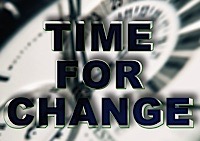innovation DAILY
Here we highlight selected innovation related articles from around the world on a daily basis. These articles related to innovation and funding for innovative companies, and best practices for innovation based economic development.
Gift Guide: The 10 Worst Toys Of The Season
 Every year around this time, we rush to the toy store in search of bargains for the wee ones, hoping to find that one glorious item hidden among the picked-over dross that is a post-Black Friday Toys ‘R’ Us. But be warned, shoppers: all is not as it seems. You see, lurking in the depths of our nation’s toy shelves, are some of the worst, most horrific toys you can ever imagine, toys so unusable and plain broken that we shudder to even gaze on their horrific boxes. Friends, we present the worst toys of the season.
Every year around this time, we rush to the toy store in search of bargains for the wee ones, hoping to find that one glorious item hidden among the picked-over dross that is a post-Black Friday Toys ‘R’ Us. But be warned, shoppers: all is not as it seems. You see, lurking in the depths of our nation’s toy shelves, are some of the worst, most horrific toys you can ever imagine, toys so unusable and plain broken that we shudder to even gaze on their horrific boxes. Friends, we present the worst toys of the season.
Is It Wise To Take A Strategic Investment From A Potential Acquirer?
 There are pros and cons to taking investment from a strategic (who is also a logical acquirer), and it has less to do with the nature of the strategic itself than it does timing, size of investment and control provisions.
There are pros and cons to taking investment from a strategic (who is also a logical acquirer), and it has less to do with the nature of the strategic itself than it does timing, size of investment and control provisions.
As a general rule, it is a bad idea to take strategic investment early in a company's development. While these opportunities often look smart and value-added, they can often be very painful and ultimately value destroying. Investments made by large corporations are generally spearheaded by a particular individual. These individuals can leave the firm, get reassigned or re-prioritize their focus such that the investment becomes "orphaned." Depending upon how much the start-up was relying on strategic assistance from the investor (business development help, working as a true channel partner, leveraging the product/service internally, etc.), this can be either simply disappointing or truly threatening.
Top 5 Public Speaking Mistakes We Continue to Make
 Maybe it’s the holiday rush or maybe I just didn’t get my usual coffee doses today, but I’m annoyed by some minor league antics I’m seeing on the conference circuit this Fall/Winter.
Maybe it’s the holiday rush or maybe I just didn’t get my usual coffee doses today, but I’m annoyed by some minor league antics I’m seeing on the conference circuit this Fall/Winter.
I have seen many presentations at various events since September (some streaming, some in person), and continue to be shocked by the idiotic public speaking mistakes we continue to make – even at the highest levels of leadership. Even by the people who should know better.
So, like the Ghost of Christmas Future, I am pointing my cold, bony finger at the Graveyard of Crappy Presentations, and showing your name etched in stone, unless you heed my advice and fix these five silly mistakes. You are better than this.
Three Steps to Establishing an Entrepreneur Brand
 With the national unemployment rate still north of 9 percent, entrepreneurship is a hot topic. Starting your own business provides a means of making ends meet while doing what you love, instead of looking for outside employment. Although entrepreneurship means risk, it allows creativity and autonomy. Yes, according to the SBA , half of businesses fail in their first year, and two-thirds fail after two years. But entrepreneurs who fail have a better chance of succeeding at their next ventures, because they have experience and understand what doesn't work.
With the national unemployment rate still north of 9 percent, entrepreneurship is a hot topic. Starting your own business provides a means of making ends meet while doing what you love, instead of looking for outside employment. Although entrepreneurship means risk, it allows creativity and autonomy. Yes, according to the SBA , half of businesses fail in their first year, and two-thirds fail after two years. But entrepreneurs who fail have a better chance of succeeding at their next ventures, because they have experience and understand what doesn't work.
To learn more about what it takes to make yourself a successful entrepreneur in the 21st century, I spoke with Tony Hawk, who became the No. 1 skateboarder in the world at age 16 and is the author of How Did I Get Here: The Ascent of an Unlikely CEO (Wiley, 2010). Hawk, who started skating at 9, just released his 12th video game—the newest piece of a billion-dollar franchise that consists of his video game series and clothing line. He shared three valuable entrepreneurship lessons with me that will help you establish a powerful brand in your industry.
Bringing the MIT innovation spirit to China
 A project to bridge ecology and bioengineering to benefit human health and a study on urban development in steep-slope areas are among the MIT research collaborations in Greater China that will receive funding as part of a new program administered by the MIT International Science and Technology Initiatives (MISTI) Global Seed Funds.
A project to bridge ecology and bioengineering to benefit human health and a study on urban development in steep-slope areas are among the MIT research collaborations in Greater China that will receive funding as part of a new program administered by the MIT International Science and Technology Initiatives (MISTI) Global Seed Funds.
The Institute this year established the $20 million MIT Greater China Fund for Innovation, $2 million of which has already been fulfilled. The fund is intended to facilitate early stage joint research between Chinese universities, research centers, and industry and MIT faculty. Six research projects have been selected as part of the inaugural round of funding.
Now in its third year, the MISTI Global Seed Funds began with funding from the Office of the Provost to enhance the internationalization of MIT research and education. The program is composed of a general pool for projects in any country and country-specific funds for Brazil, China, France, Germany, India, Italy, Japan and Spain.
Top 10 Sectors For Great New Jobs
 We all know that high employment puts a damper on the economy. It also serves to get people thinking about what options may be available to them when looking for work.
We all know that high employment puts a damper on the economy. It also serves to get people thinking about what options may be available to them when looking for work.
A team of three academicians set out to discover where the jobs are, publishing a book, Closing America’s Job Gap, to provide those answers. Mary Walshok, PhD, a thought leader on career reinvention and the new innovation economy; Tapan Munroe, PhD, a recognized author, speaker and advisor in economics; and Henry DeVries, MBA have collaborated to offer what may prove to be a defining book for today’s job seekers.
According to Closing America’s Job Gap, the top ten innovative sectors to consider are:
1. Embedded engineering. There are career options for software developers willing to learn some new tricks. Devices from phones, appliances and televisions, to automobiles and iPods, all use processors to run. These complex digital processors, or computers, are embedded systems, often built around a microprocessor core, that are designed by software engineers.
How to stop a hurricane (good luck, by the way)
 As another hurricane season passes, I’m disappointed I didn’t hear Bill Gates resound with last year’s grand (yet perhaps logistically impossible) idea to dump tons of cold water in the path of moving twisters like Karl, Danielle, Lisa, and Tomas. Maybe Steve Jobs is plotting a more hip idea for 2011…
As another hurricane season passes, I’m disappointed I didn’t hear Bill Gates resound with last year’s grand (yet perhaps logistically impossible) idea to dump tons of cold water in the path of moving twisters like Karl, Danielle, Lisa, and Tomas. Maybe Steve Jobs is plotting a more hip idea for 2011…
Despite a tech mogul’s proclivity to bet on a solution, we know very little about how to stop a hurricane, though there are many quirky options on the table. I’ll give you silver iodide, a supersonic jet, and raise you a nuclear warhead. You think I’m kidding.
Recent research says microscopic phytoplankton of all things might slow down the blustery beasts. These tiny photosynthetic plants, floating like mile-wide, flat bushes in the ocean, may drink up the sunshine that would normally warm waters and thereby feed hurricanes (cyclones,) say scientists at NOAA’s Geophysical Fluid Dynamics lab in Princeton.
Babson’s Schlesinger and IA’s Kiefer Author Action Trumps Everything—Creating What You Want In An Uncertain World
Action Trumps Everything — Creating What You Want In An Uncertain World explains how the power of entrepreneurial thought and action (ETA) – at home and work — brings people closer to their life dreams.
www.ActionTrumpsEverything.com
The new book shows the reader how to think like a successful entrepreneur and make the right decisions in an increasingly uncertain and chaotic world.
- Len Schlesinger is President of Babson College, the top-ranked business school for entrepreneurship.
- Charles Kiefer, President of Innovation Associates, has for 30 years used his concept of high-performing teams to help technology organizations increase their innovation successes.
4 Trends Shaping the New Decade
 Dr. Hermann Simon, my favorite growth company researcher, is at it again – racing around the globe (in Japan as I write this), sharing what he sees are the trends shaping the new decade. He was kind enough to let me preview his latest research and share the results. Here's my interpretation of four of his trends most likely to impact growth firms:
Dr. Hermann Simon, my favorite growth company researcher, is at it again – racing around the globe (in Japan as I write this), sharing what he sees are the trends shaping the new decade. He was kind enough to let me preview his latest research and share the results. Here's my interpretation of four of his trends most likely to impact growth firms:
It's not an accident that the best performing U.S. stocks have been for firms with huge global activity.
ACCELERATING GLOBALIZATION
We've only seen the tip of the iceberg when it comes to exporting. In 1950, world exports per capita were just six dollars. By 1980, they had jumped to $437. Thus, the relative jump was enormous. However, the absolute numbers are starting to accelerate. By the year 2000, world exports per capita more than doubled to $ 985. They jumped to $ 1,600 by 2005. And they reached almost $ 2,400 in 2008.
When Authenticity Ain’t Enough
 It’s been the buzzword of all buzzwords in social media for at least a year.
It’s been the buzzword of all buzzwords in social media for at least a year.
And, in response to my recent post, What People Think IS Your Business, many folks shared how important they believe it is “be authentic,” then let the chips pretty much fall where they need to fall career-wise.
The word, we’d like to believe, will rally to support authenticity…and respond with money.
So, here’s something that’s gonna be a bit jarring…
Being yourself matters. Being authentic matters. In life. In business. In relationships. In everything. It’s what allows us to align actions with intention. It makes us feel good. It let’s us own our lives. It is sooo important.
But…BUT…in business, often times authenticity ALONE won’t get you there.
To become truly magnetized from a business standpoint…
Authenticity must align with mastery and need
Stakeholder Value from SBIR? Think Assets not Revenues!
 A client recently asked me to help him with a presentation that involved a chart that depicted the value derived by “stakeholders” in an SBIR project. The chart only considered the distribution of the funds provided by the grant. That made me think about the whole issue of stakeholder value in SBIR-funded ventures.
A client recently asked me to help him with a presentation that involved a chart that depicted the value derived by “stakeholders” in an SBIR project. The chart only considered the distribution of the funds provided by the grant. That made me think about the whole issue of stakeholder value in SBIR-funded ventures.
Unfortunately, for most awardees, SBIR has little to do with market share or even market definition. It’s basically a Technology-Push facilitator. The Agencies define technology priorities or projects they’d like done. The small businesses propose a project to develop the technology to proof of concept. That’s not the same thing as a product. And most Agencies would never be the customer and buy the result of an SBIR project. They’re strictly being seed investors.
Even for DOD, who does buy things for deployment, the resulting SBIR-developed technology innovation is not usable until it’s integrated into a solution they can actually deploy. They don’t buy technology, they buy complete and fieldable systems. That frequently requires integration and collaboration with a Prime contractor. The DOD market is what the Prime serves. It’s up to the small business to figure out who to team with to enable that integration. Their market is not the final customer of the solution – it’s the Prime. Their challenge is how to make money from what gets developed as a result of the SBIR funding.
The Top Cleantech Countries
 Where are advances being made in clean energy technology? Judging by patent awards, only in a very small number of countries.
Where are advances being made in clean energy technology? Judging by patent awards, only in a very small number of countries.
Twelve countries accounted for nearly 90% of cleantech inventions between 2000 and 2005, according to an analysis of the E.U.'s World Patent Statistical Database conducted by the economists Matthieu Glachant and Antoine Dechezleprêtre. Of those 12 countries, just three accounted for 60% of patent awards: Japan, the United States and Germany.
How to achieve ‘biological immortality’ naturally
 Evolutionary biologist Michael Rose, professor at University of California, Irvine, says he has discovered a natural way to achieve “biological immortality” without the use of anti-aging drugs and stem cell treatments.
Evolutionary biologist Michael Rose, professor at University of California, Irvine, says he has discovered a natural way to achieve “biological immortality” without the use of anti-aging drugs and stem cell treatments.
“It’s one you can start this evening,” the author of Evolutionary Biology of Aging shared in his talk Saturday at Humanity+ @ Caltech in Los Angeles. “It comes at no cost, you don’t have to buy anything, and, in fact, it might save you money.”
The term “biologically immortality” in gerontology is not to be confused with the Greek idea of immortality, or a god-like sense of living forever. It’s the point in which the exponential increase in mortality rates of a species population appears to level off, producing a sudden late-life plateau.
Watch an Apple Engineer Recreate a 2,000-Year-Old Computer Using Legos
Remember that old commercial about "Zack, the Lego maniac"? Well, Zack ain't got nothing on Andrew Carol. When Carol's not working on improving the finer points of OS X as a software engineer at Apple, he's hard at work building analog computers -- like the Babbage difference engine -- entirely out of Legos.
Recently, Carol has completed his biggest challenge yet: a working Lego replica of the famous Antikythera Mechanism, created by ancient Greeks in 100 B.C. as a way of predicting astronomical events like eclipses. Though pictures of Carol's device have surfaced before, few people have delved into how it functions. Working with Digital Science, I directed a short film about the device using stop-motion animation to explain how it works -- and talked to Andy about his design process.
The Antikythera Mechanism in Lego from Small Mammal on Vimeo.
Two Wharton Pals Take Same Road To Riches
 Perhaps it’s a coincidence. Or maybe it’s the secret recipe. Either way, two young entrepreneurs who followed the same path three years ago each sold their start-ups recently for more than $70 million.
Perhaps it’s a coincidence. Or maybe it’s the secret recipe. Either way, two young entrepreneurs who followed the same path three years ago each sold their start-ups recently for more than $70 million.
The road to riches started when pals Jack Abraham and Nat Turner, two students at the University of Pennsylvania’s Wharton School of business, each received the Wharton Venture Award, which provides $10,000 for student entrepreneurs to work on a start-up in lieu of full-time summer internships.
Abraham and Turner decided to rent a space in Philadelphia to germinate their business ideas during the summer of 2007. The small loft included a few computers, a few blow-up mattresses, and a few big ideas.
Peering Over the Valley of Death at the MIT Sloan Energy Finance Forum
 The second annual MIT Sloan Energy Finance Forum, which focused on the lifecycle of energy finance, was held last Friday at the Sloan School of Management at MIT. I am not someone interested in working in finance, but I decided to walk across campus to get a sense of the state of the sector in case I ever am in the position to develop a business from a technology I may develop during my time as a student here at MIT or afterwards.
The second annual MIT Sloan Energy Finance Forum, which focused on the lifecycle of energy finance, was held last Friday at the Sloan School of Management at MIT. I am not someone interested in working in finance, but I decided to walk across campus to get a sense of the state of the sector in case I ever am in the position to develop a business from a technology I may develop during my time as a student here at MIT or afterwards.
As a fourth year PhD student in mechanical engineering, I have been around the block before; I have gotten to know a couple generations of Sloan MBA students, many of whom are very eager to find a technologist—someone with a potentially marketable technology—and lead this unsuspecting engineer or scientist down the path of soliciting investment and business development. I have not yet come across what I would consider to be a marketable technology during my graduate work, but I figured that this forum would afford me a good opportunity to understand this pipeline and what I may possibly encounter.
High-Tech Jobs Evaporate By the Thousands in Detroit and San Francisco Bay Area; Boston, San Diego, Seattle Hold Their Own
 In 2009, employment at high-tech companies either declined or stayed essentially flat in all of the cities Xconomy calls home, according to a study of the nation’s top 60 “cybercities” released this week by TechAmerica, a Washington, D.C.-based trade association for the information technology industry.
In 2009, employment at high-tech companies either declined or stayed essentially flat in all of the cities Xconomy calls home, according to a study of the nation’s top 60 “cybercities” released this week by TechAmerica, a Washington, D.C.-based trade association for the information technology industry.
Though the underwhelming job data certainly accords with most people’s subjective experiences of the recession, there is a glass-half-full way of looking at it: the job losses weren’t as bad in Boston, San Diego, and Seattle as they were in most other places around the country. Between 2008 and 2009, high-tech employment nationwide fell by 195,607, or 3.2 percent. The decline in Boston was far milder—just 1 percent—and tech employment held steady in Seattle (though it declined slightly in neighboring Portland). The TechAmerica report found that San Diego actually added a small handful of jobs—500, an increase of 0.4 percent.

 Smooth shapes are very rare in the wild but extremely important in the ivory tower and the factory.
Smooth shapes are very rare in the wild but extremely important in the ivory tower and the factory. This past Thursday it was announced that my first fund, IA Ventures, had closed with $50 million in commitments from a group of fantastic investors.
This past Thursday it was announced that my first fund, IA Ventures, had closed with $50 million in commitments from a group of fantastic investors. 